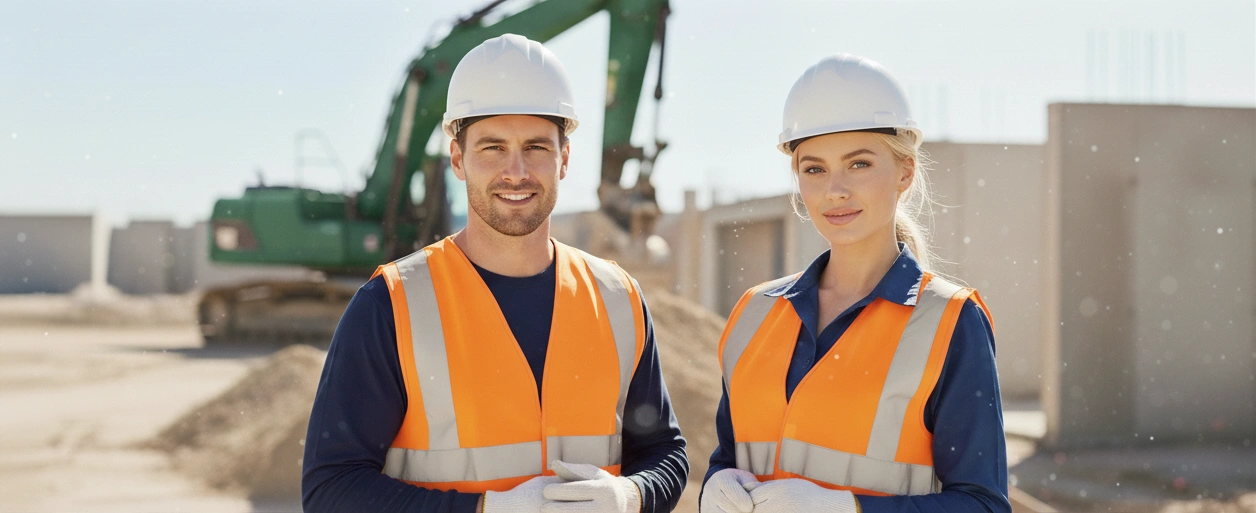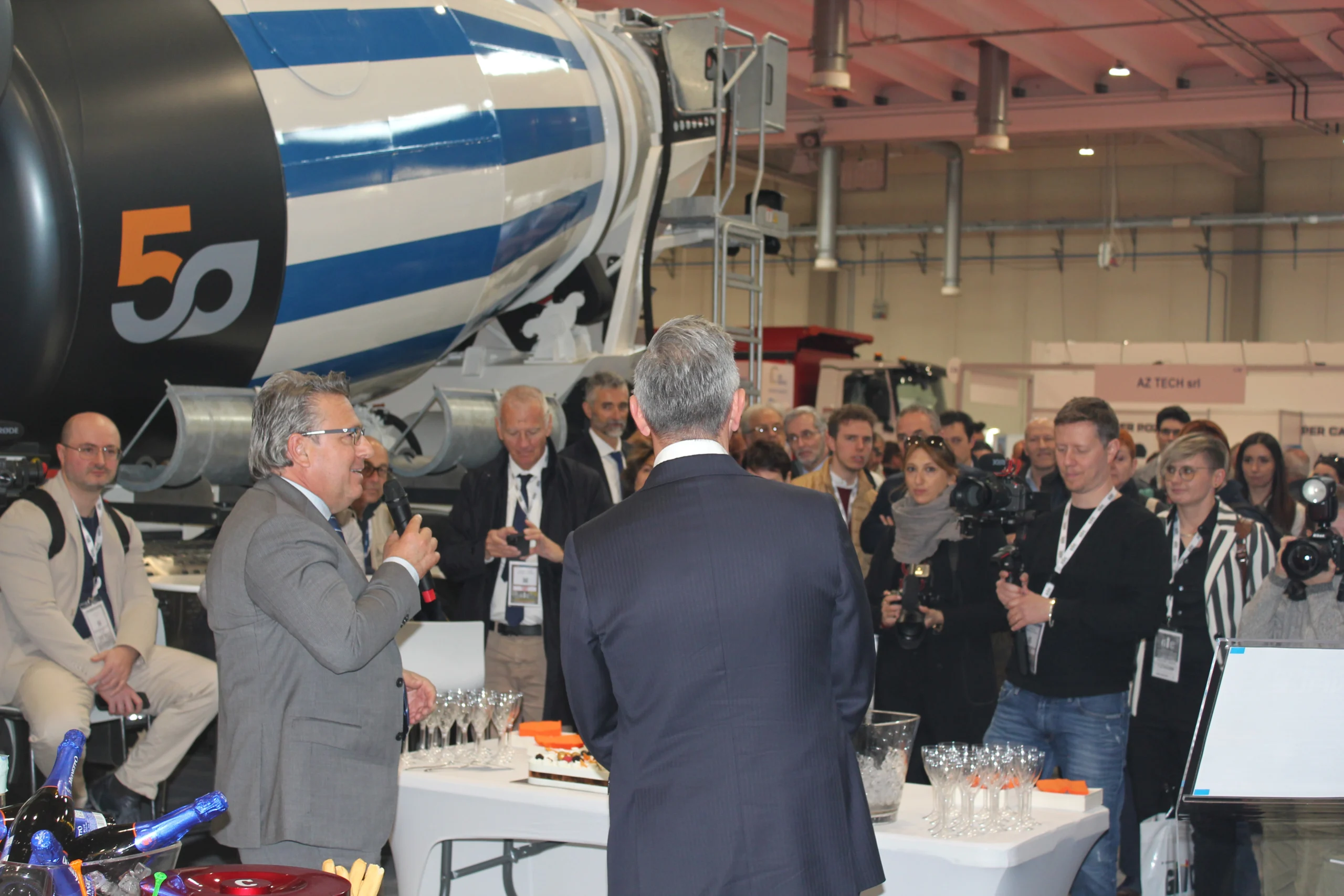Inspired by a client’s use of beautiful construction project photography, we reflect on how to turn blank walls – in offices, training centres or factory corridors – into a strategic tool for building internal pride and external trust.
As specialist industrial B2B communicators, we spend much of our time focused on digital channels – crafting pitches for online media, shaping web content, managing social media campaigns, and increasingly, ensuring messages are understood by AI models through generative engine optimisation (GEO).
But communication doesn’t only happen online and a recent visit to a client’s offices reminded us that the physical environment can also be part of a company’s story.
What stood out wasn’t the decoration as such, but the way the walls themselves had been used as a narrative device. Instead of generic prints, they displayed striking photographs of some of the client’s most impressive architecture and infrastructure projects. Walking through the building felt less like moving between meeting rooms and more like a tour of achievements – each image prompting conversation and pride.
We’re far from being experts in interior design but this isn’t just about aesthetics. It’s about recognising that everything communicates something. From a press release to a corridor wall, every touchpoint contributes to how employees, customers, and other visitors perceive who you are and what you stand for.
Building purpose and pride among employees
For employees, especially those in roles far removed from seeing the end product in action, physical spaces can help connect everyday work to a company’s larger purpose and serve as a daily visual reminder of the legacy they are contributing to. Research from the American Psychological Association shows that workplaces reflecting organisational values can significantly boost engagement and retention and in industries competing for talent, a physical environment that instils pride and a shared sense of achievement is invaluable.
The ultimate conversation starter for external visitors
The impact on external visitors can be equally as powerful. When hosting customers, journalists, suppliers, or other stakeholders, a ‘gallery tour’ approach is the ultimate form of ‘show, don’t tell’. It’s a natural low-pressure way to demonstrate the breadth and quality of your work, build instant credibility with tangible proof of your claims, and share authentic anecdotes about challenges overcome and innovations delivered.
Making walls work for your communications strategy
Turning your office into a strategic communications asset doesn’t have to be complex, and it’s not limited to photography. It just requires a thoughtful approach.
1. Curate with purpose
Don’t just display your biggest wins – curate a collection that tells a story about your company’s values and vision. For one client, our creative services included developing a full-length mural along a main corridor that acted as a timeline of innovation and visualised its core values. It transformed a simple hallway into an induction tool for new hires and a statement of brand identity for visitors.
2. Invest in quality
Whether it’s professional photography for a gallery of projects or a custom-designed mural, the quality of the execution must reflect the quality of your brand. This is not the place for snapshots from a phone. A modest investment in professional design and high-quality materials pays dividends by creating a physical environment that mirrors your company’s commitment to excellence.
3. Connect physical with digital
The story doesn’t have to end on the wall. A discreet plaque next to each photo can include a QR code that links directly to the full, in-depth case study on your website. For a historical mural, QR codes could link to archival videos or blog posts about key company milestones. This connects your real-world conversations to your digital assets, ensuring consistency across all channels.
4. Design for the future
If you’re planning a timeline or mural – something more permanent than prints hung on a wall – it’s important to ensure it can evolve with your company. Otherwise, it could feel outdated in just a few years. Leave some space blank to add future milestones, innovations, and achievements. This foresight will not only save you the time, effort, and cost of a complete redesign down the road, but reinforce that your company is not just resting on past achievements but actively building a legacy for the future.
5. Empower your team of storytellers
Remember, a beautiful display is just a passive asset until someone brings it to life, so your final step should be to empower and equip your team on how to make the most of it as a communication tool. Whether it’s sales leads giving a customer a tour or an HR business partner onboarding a new employee, brief your colleagues on the key messages behind each visual and encourage them to share the anecdotes and context that only a person can provide. This is the key to turning a simple gallery into an active, high-impact part of your brand narrative.
Considerations for putting this into practice
If you’re considering how physical spaces can support your communication goals, it can help to ask:
- What do we want employees and visitors to feel the moment they enter?
- Which stories on our walls best reflect why we exist, not just what we deliver?
- How do our physical spaces reinforce the same messages as our digital channels?
- What lasting impression should someone take with them when they leave?
The unspoken message
The fact remains that physical environments communicate something whether we plan them to or not. Blank walls may seem neutral, but to visitors or employees they can suggest caution or even a lack of identity. By contrast, thoughtful environments project confidence, pride, and credibility.
For industrial companies – where scale, trust, and legacy matter – physical space is too important to leave out of the communications mix. Every channel, digital or otherwise, contributes to reputation. And sometimes, the walls speak louder than the website.
If you’d like to explore more creative ways to tell your brand’s story, in both the physical and digital worlds, let’s start a conversation.

Hannah Kitchener
Associate Director
About the author
Hannah is an associate director in the UK, leading strategic campaigns for industrial clients across the EMEA region. A professionally qualified journalist (NCTJ), she combines specialist sectoral knowledge in construction, energy, and materials handling with a strong network of trade media contacts to secure valuable coverage. Her expertise in inter-cultural communication, honed by degrees in modern languages and translation, is key to executing campaigns that succeed across diverse European markets.




